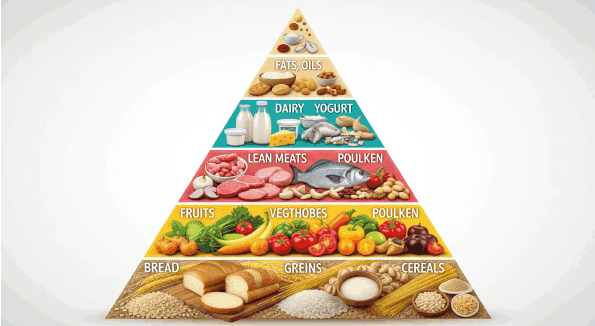Table of contents
Healthy Diet for Children: Every parent dreams of giving their child the best possible start in life, and one of the most powerful tools to achieve this is through a healthy diet for children. The way a child eats during their early years directly shapes their growth, learning ability, emotional balance, and long-term health. The e-book Child Diet Dilemma: The Best Ways to Healthy Eating for Children provides parents with a structured, science-based, and practical approach to nutrition. It answers the questions many families have about balancing meals, avoiding harmful foods, and building positive habits that last a lifetime.
Healthy Diet for Children: The Basics of Nutrition
The author begins by emphasizing the nutritional foundations of a healthy diet for children. Children require essential vitamins, minerals, proteins, carbohydrates, and healthy fats to grow and thrive. However, the challenge lies in turning these scientific requirements into meals that children actually enjoy. The book explains in clear language how to create meal plans that are not only nutritious but also appealing to young taste buds. Parents learn how to balance daily calorie needs according to age and activity level, ensuring steady growth without overfeeding or underfeeding.

Healthy Diet for Children and the Importance of Breakfast
One of the strongest recommendations in this e-book is never to underestimate the power of breakfast. According to the author, a healthy diet for children starts every morning with a balanced meal. Children who eat nutritious breakfasts are more alert, have stronger concentration, and perform better in school. On the other hand, skipping breakfast often leads to irritability, poor focus, and unhealthy snacking later in the day. The book offers practical examples of quick, wholesome breakfasts rich in fiber, whole grains, and proteins that parents can prepare even on busy mornings.

Reducing Sugar and Flour in a Healthy Diet for Children
The author is clear about one major obstacle: processed flour and refined sugar. A healthy diet for children must minimize these empty calories, which contribute to obesity, poor dental health, and future metabolic issues. Instead of banning treats completely, the book recommends healthier substitutes—such as honey instead of refined sugar, or oatmeal and fruits instead of pastries. These swaps help children build a palate for healthier flavors while still enjoying the foods they love.

Understanding Fats in a Healthy Diet for Children
Another critical chapter addresses the dangers of excessive fats. While healthy fats are essential for energy and brain development, too many saturated or trans fats can harm a child’s long-term health. The author explains how a balanced approach ensures children get the benefits of good fats from sources like fish, nuts, and olive oil while reducing harmful fats from junk food and fried snacks. By making smarter food choices, parents can protect their child from obesity, diabetes, and heart problems later in life.

Making Healthy Diet for Children Fun and Accessible
One of the most valuable contributions of this e-book is its focus on practicality. A healthy diet for children does not need to be boring or stressful. The author suggests creative techniques to make healthy food appealing—turning vegetables into fun shapes, involving children in meal preparation, and adding color to plates to stimulate appetite. By making food both fun and accessible, parents reduce resistance and build a positive relationship between children and healthy eating.
Using the Food Pyramid for a Healthy Diet for Children
To give parents a clear roadmap, the author highlights the role of the food pyramid. This tool helps families understand how much of each food group—grains, vegetables, fruits, proteins, dairy, and limited fats—should be included daily. The book explains how applying the food pyramid leads to balanced meals and reduces the risk of nutritional gaps. By following this system, parents can confidently create meal plans that align with the principles of a healthy diet for children.

Preventing Childhood Obesity Through a Healthy Diet for Children
One of the most pressing issues addressed is the rise of childhood obesity. The author highlights how poor eating habits and inactive lifestyles contribute to weight problems at an early age. Through the guidance in this book, parents learn how to prevent obesity by combining a healthy diet for children with regular physical activity. Early prevention not only protects children from health complications but also teaches them the lifelong value of balance, moderation, and movement.
The Author’s Perspective and Recommendations
What makes this e-book especially valuable is the author’s realistic perspective. He acknowledges the challenges parents face with picky eaters and busy schedules but insists that small, consistent changes create powerful results. His recommendation is to focus less on perfection and more on progress—introducing healthier foods gradually, encouraging active lifestyles, and modeling good habits as parents. Above all, the author believes that a healthy diet for children is not just about avoiding illness, but about giving every child the energy, confidence, and vitality to thrive.